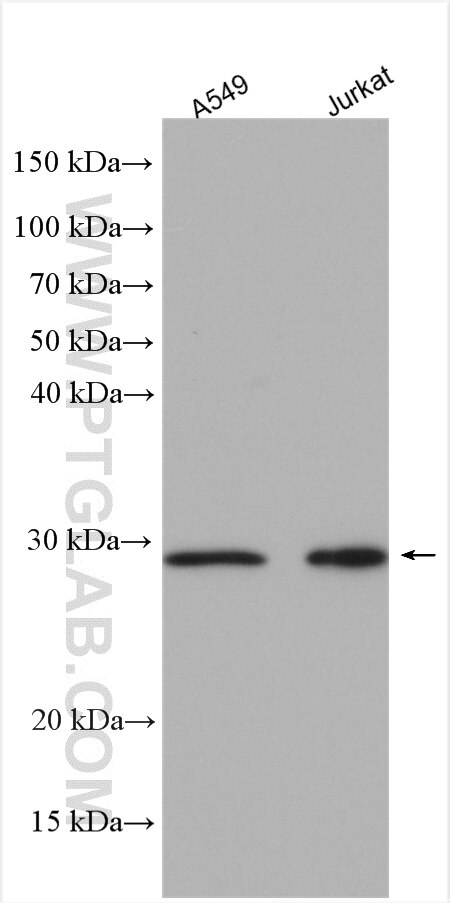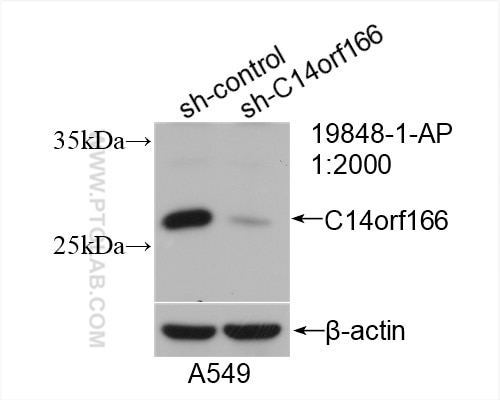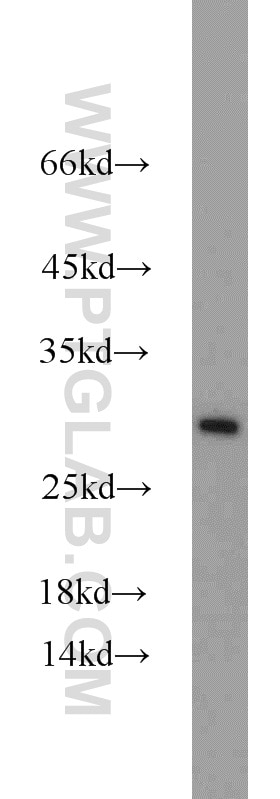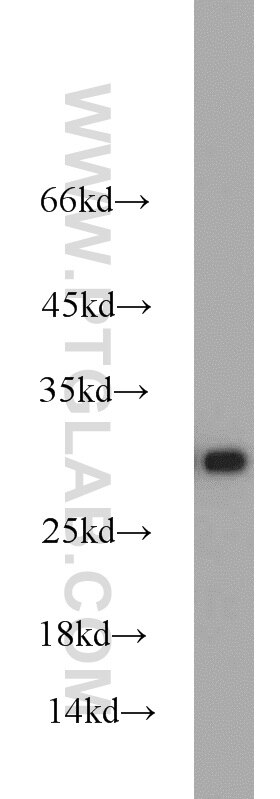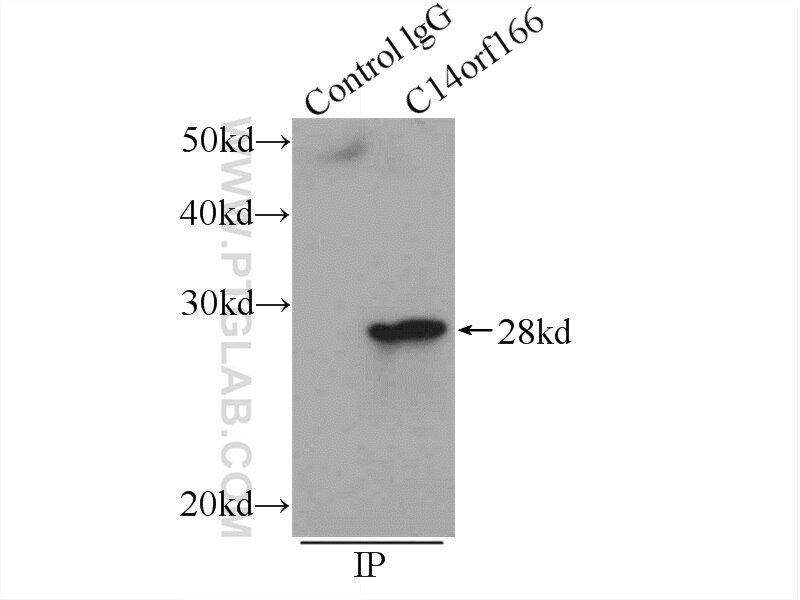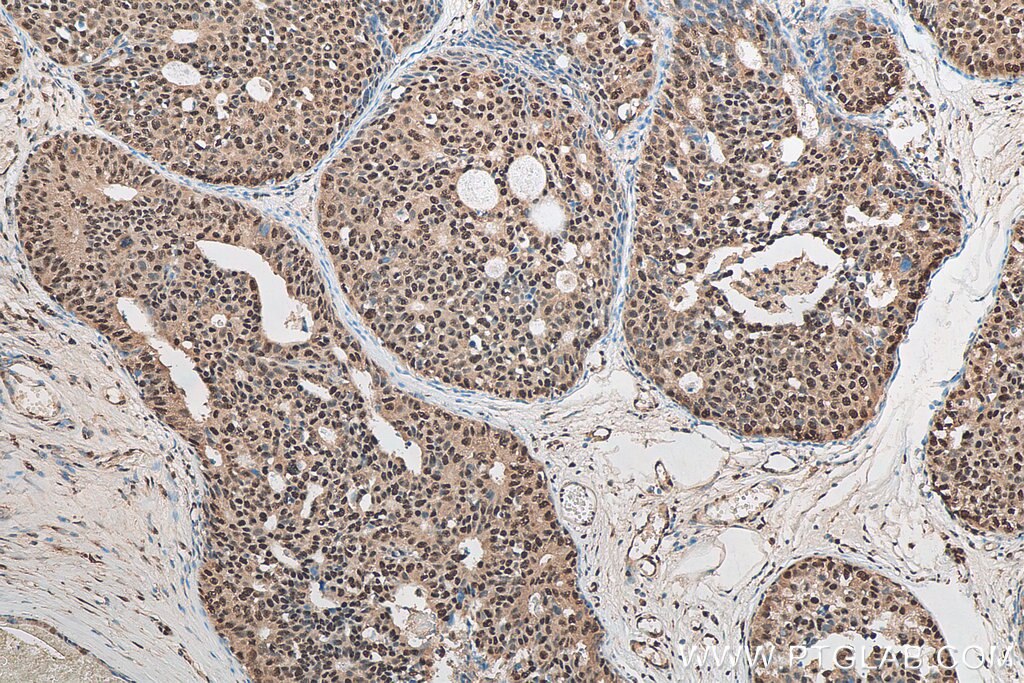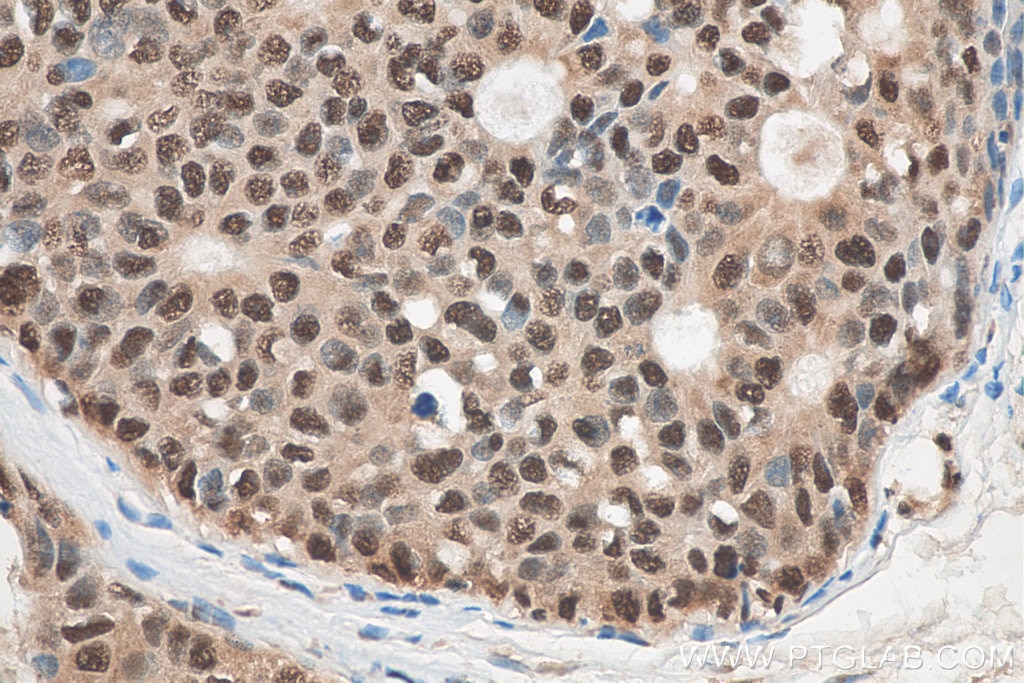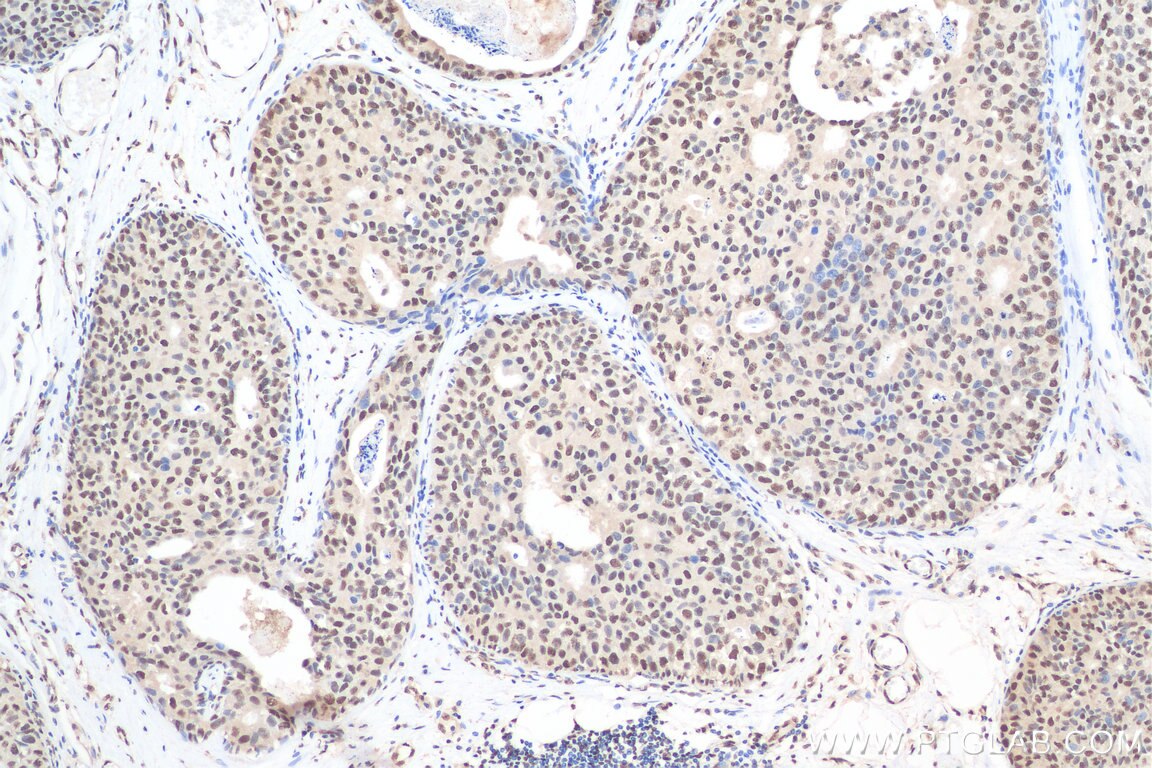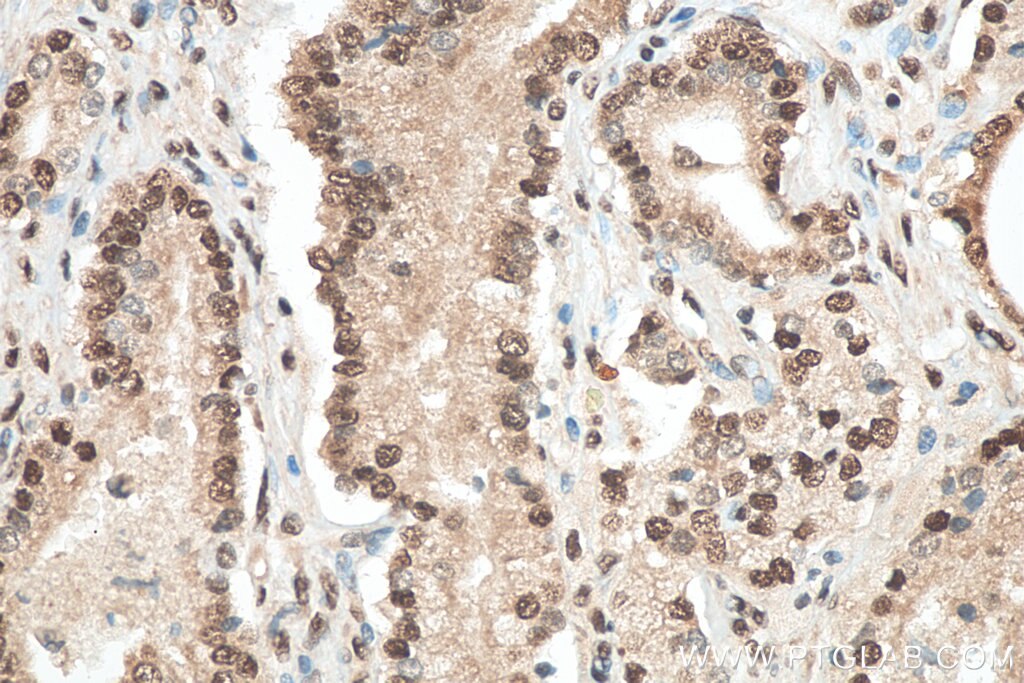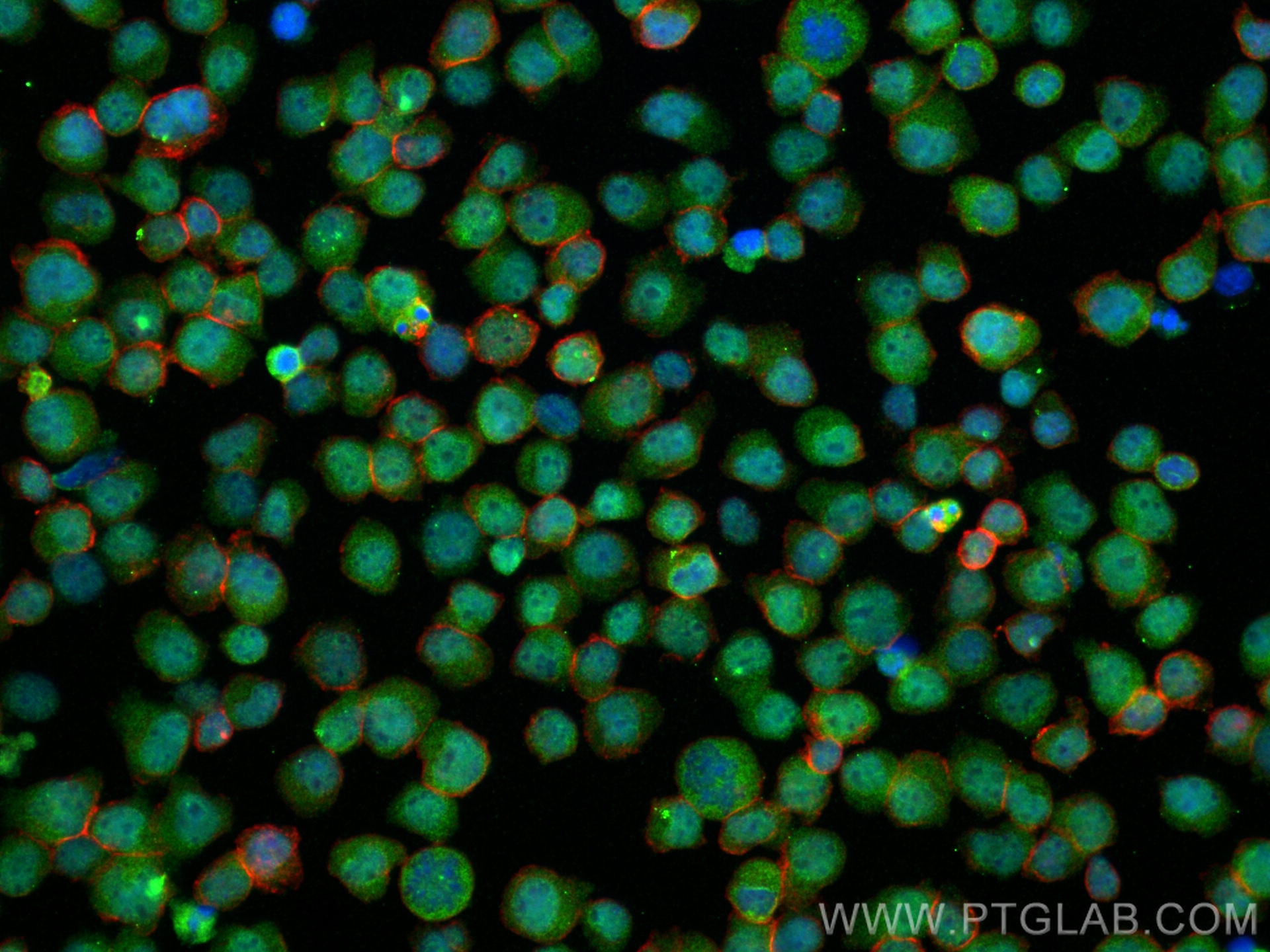- Featured Product
- KD/KO Validated
C14orf166 Polyclonal antibody
C14orf166 Polyclonal Antibody for WB, IP, IF, IHC, ELISA
Host / Isotype
Rabbit / IgG
Reactivity
human, mouse, rat
Applications
WB, IP, IF, IHC, ELISA
Conjugate
Unconjugated
Cat no : 19848-1-AP
Synonyms
Validation Data Gallery
Tested Applications
| Positive WB detected in | A549 cells, mouse pancreas tissue, mouse lung tissue, Jurkat cells |
| Positive IP detected in | Jurkat cells |
| Positive IHC detected in | human breast cancer tissue, human prostate cancer tissue Note: suggested antigen retrieval with TE buffer pH 9.0; (*) Alternatively, antigen retrieval may be performed with citrate buffer pH 6.0 |
| Positive IF detected in | Jurkat cells |
Recommended dilution
| Application | Dilution |
|---|---|
| Western Blot (WB) | WB : 1:1000-1:6000 |
| Immunoprecipitation (IP) | IP : 0.5-4.0 ug for 1.0-3.0 mg of total protein lysate |
| Immunohistochemistry (IHC) | IHC : 1:50-1:500 |
| Immunofluorescence (IF) | IF : 1:50-1:500 |
| It is recommended that this reagent should be titrated in each testing system to obtain optimal results. | |
| Sample-dependent, Check data in validation data gallery. | |
Published Applications
| KD/KO | See 1 publications below |
| WB | See 6 publications below |
| IHC | See 4 publications below |
Product Information
The immunogen of 19848-1-AP is C14orf166 Fusion Protein expressed in E. coli.
| Tested Reactivity | human, mouse, rat |
| Cited Reactivity | human, mouse |
| Host / Isotype | Rabbit / IgG |
| Class | Polyclonal |
| Type | Antibody |
| Immunogen | C14orf166 fusion protein Ag13900 |
| Full Name | chromosome 14 open reading frame 166 |
| Calculated Molecular Weight | 244 aa, 28 kDa |
| Observed Molecular Weight | 28 kDa |
| GenBank Accession Number | BC001722 |
| Gene Symbol | C14orf166 |
| Gene ID (NCBI) | 51637 |
| RRID | AB_10646485 |
| Conjugate | Unconjugated |
| Form | Liquid |
| Purification Method | Antigen affinity purification |
| Storage Buffer | PBS with 0.02% sodium azide and 50% glycerol pH 7.3. |
| Storage Conditions | Store at -20°C. Stable for one year after shipment. Aliquoting is unnecessary for -20oC storage. 20ul sizes contain 0.1% BSA. |
Background Information
Human CLE/C14orf166 protein is a positive modulator of cellular RNA polymerase. CLE is also shown to interact with the influenza virus polymerase complex and colocalizes with viral ribonucleoproteins, and is required for viral replication. Similarly, CLE is identified as a novel host interacting partners of the mature hepatitis C virus core protein. CLE levels were significantly higher in the serum of patients with PaCa compared with the control group was strongly expressed in tumor cells, suggesting that C14orf166 may be a potential biomarker of pancreatic adenocarcinoma.
Protocols
| Product Specific Protocols | |
|---|---|
| WB protocol for C14orf166 antibody 19848-1-AP | Download protocol |
| IHC protocol for C14orf166 antibody 19848-1-AP | Download protocol |
| IF protocol for C14orf166 antibody 19848-1-AP | Download protocol |
| IP protocol for C14orf166 antibody 19848-1-AP | Download protocol |
| Standard Protocols | |
|---|---|
| Click here to view our Standard Protocols |
Publications
| Species | Application | Title |
|---|---|---|
Nucleic Acids Res A novel all-in-one conditional knockout system uncovered an essential role of DDX1 in ribosomal RNA processing. | ||
Biosci Rep Overexpressed C14orf166 associates with disease progression and poor prognosis in non-small cell lung cancer. | ||
J Transl Med C14orf166 overexpression correlates with tumor progression and poor prognosis of breast cancer.
| ||
Tumour Biol C14ORF166 overexpression is associated with pelvic lymph node metastasis and poor prognosis in uterine cervical cancer. | ||
Tumour Biol Overexpression of chromosome 14 open reading frame 166 correlates with disease progression and poorer prognosis in human NPC. | ||
Mol Med Rep Expression and clinical significance of C14orf166 in esophageal squamous cell carcinoma. |
